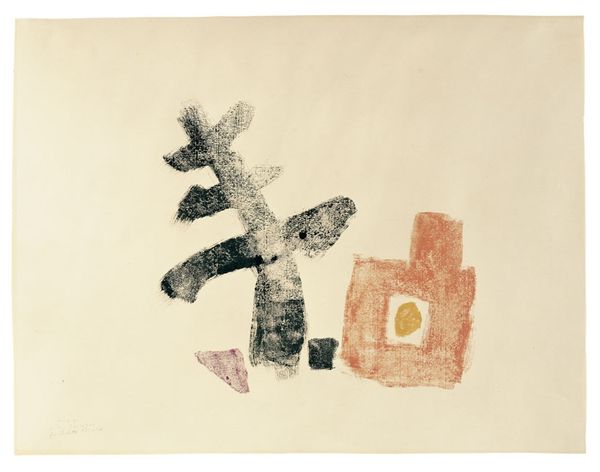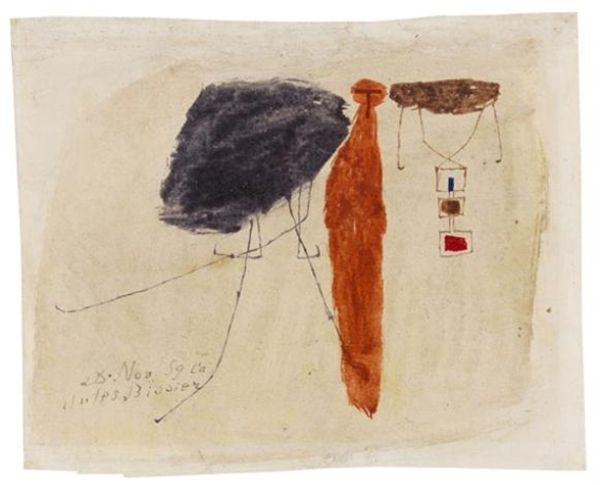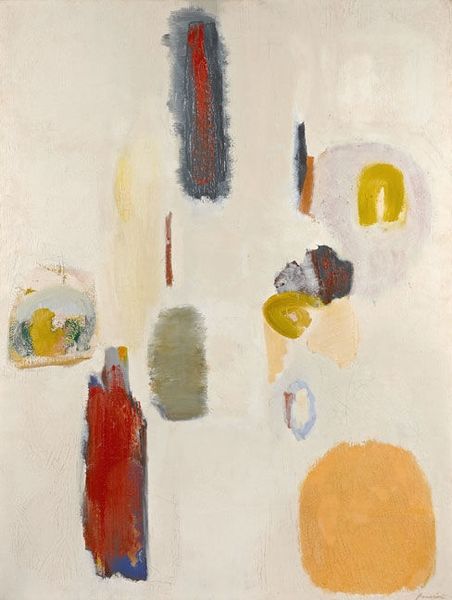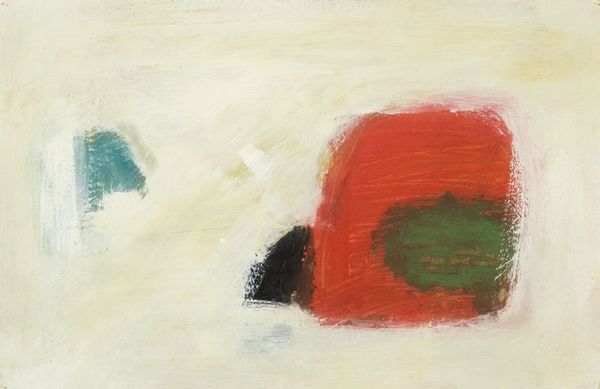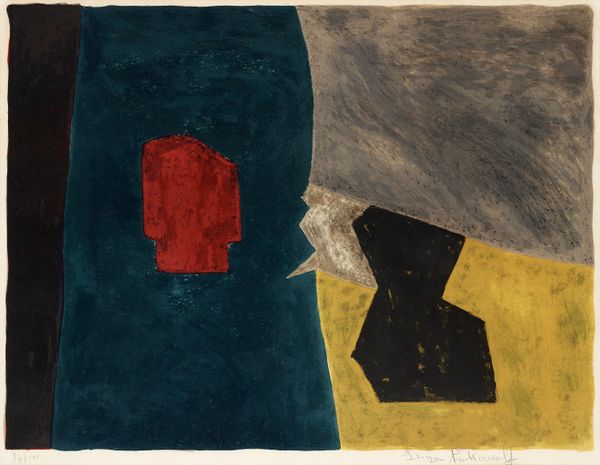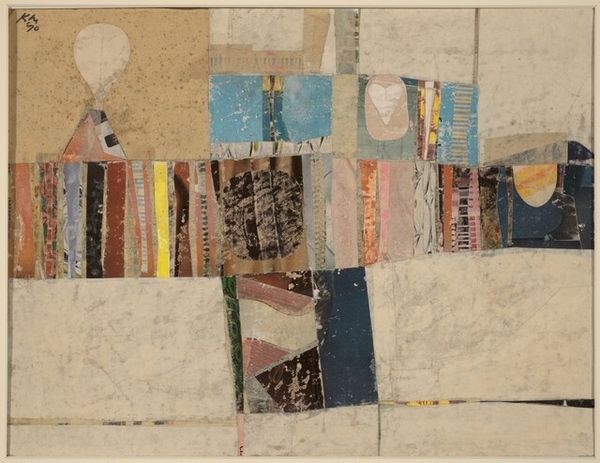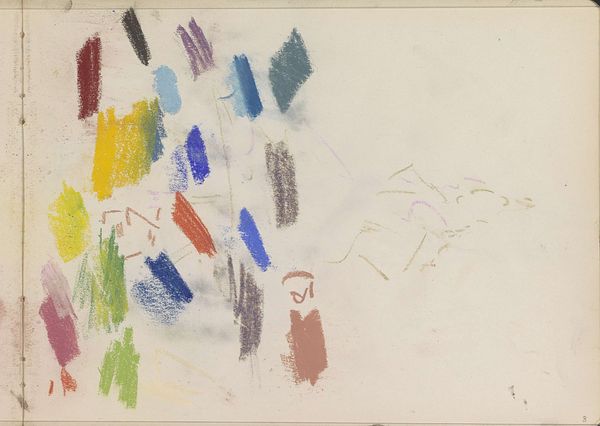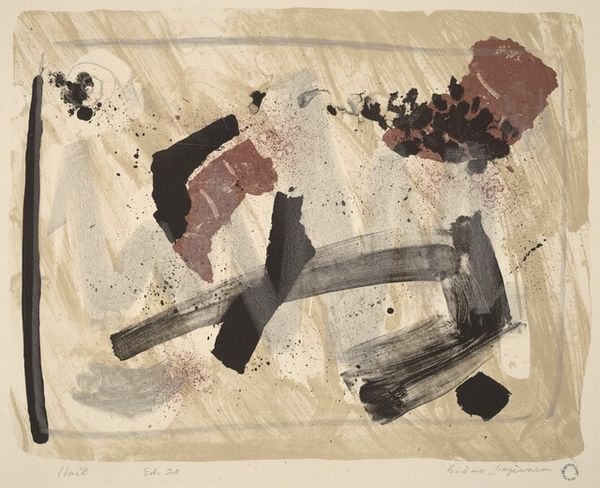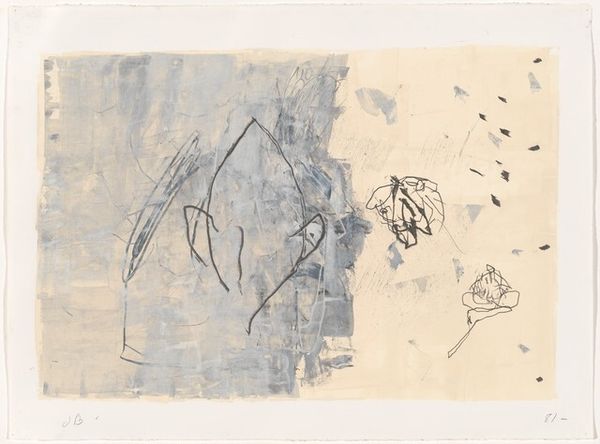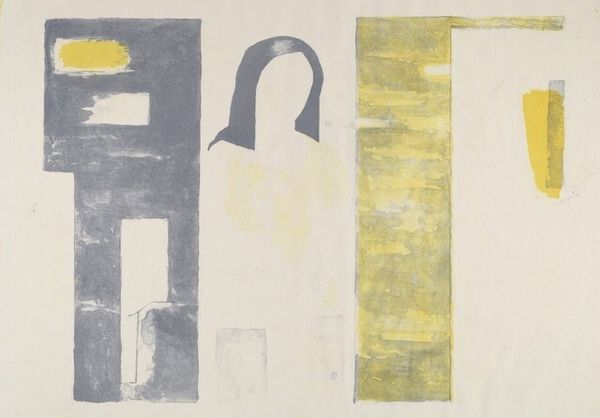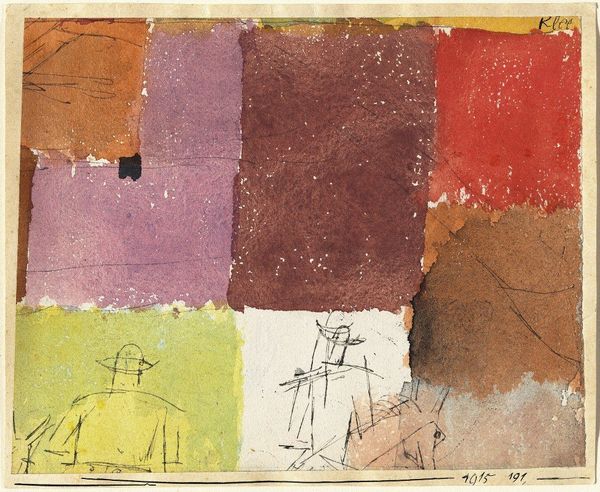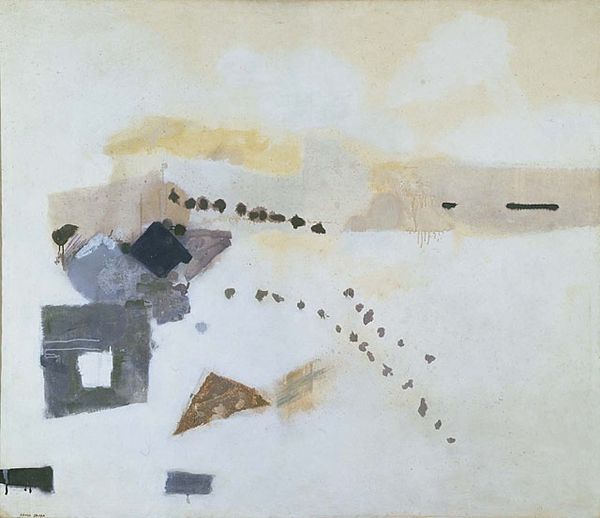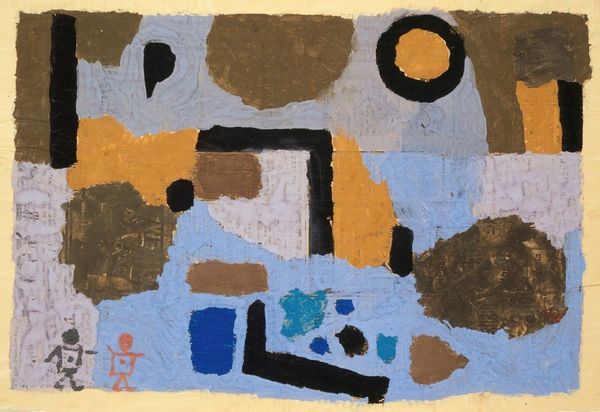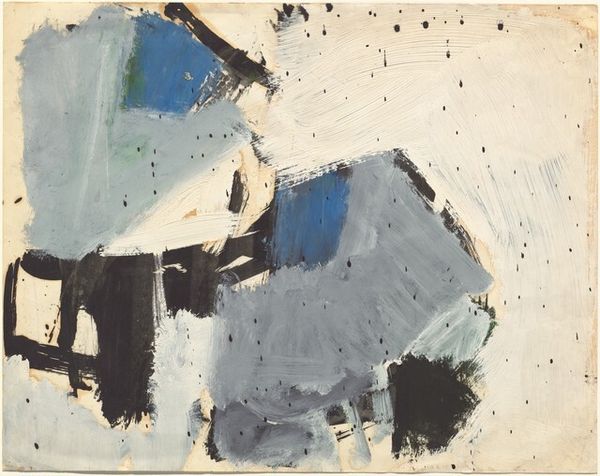
mixed-media, coloured-pencil, watercolor
#
abstract-expressionism
#
mixed-media
#
coloured-pencil
#
water colours
#
form
#
watercolor
#
coloured pencil
#
geometric-abstraction
#
abstraction
#
line
#
watercolor
Copyright: Julius Bissier,Fair Use
Editor: This is Julius Bissier’s "3.9.56 II," made in 1956 with mixed media, including watercolor and colored pencil. It feels almost like a secret language, these little shapes clustered on the canvas. What do you see in this piece, beyond just the formal elements? Curator: I see a quiet resistance. Bissier created this during a period of intense social upheaval. Looking at these small, seemingly insignificant forms, consider them as whispers of dissent. They exist outside the dominant narratives of power, a subtle rebellion against the grand narratives often imposed upon us. Editor: A rebellion? It's so...delicate. How can something so small be a form of resistance? Curator: Exactly! It's precisely in the quietude and intimacy of the work that its power lies. Consider how marginalized voices are often silenced or ignored in mainstream discourse. Bissier's work, in its miniaturization and abstraction, mirrors that experience. Each shape becomes a fragment of a suppressed story, demanding to be seen and acknowledged. Don't you think there's also something profound about the choice of materials? Watercolors and coloured pencil – tools often relegated to the realm of the domestic or the amateur. Editor: I guess I hadn't thought about that, that choosing more commonplace tools is in itself some kind of…statement? It makes me think of how women's craftwork has historically been overlooked. Curator: Precisely. By embracing these 'lesser' mediums, Bissier challenges the established hierarchy of artistic value, creating space for alternative voices and perspectives. Editor: It's incredible how much you can unpack from such a small, unassuming work. I see it completely differently now. Curator: And that's the beauty of engaging with art, isn’t it? It prompts us to question, to re-evaluate, and ultimately, to amplify the voices that often go unheard.
Comments
No comments
Be the first to comment and join the conversation on the ultimate creative platform.
